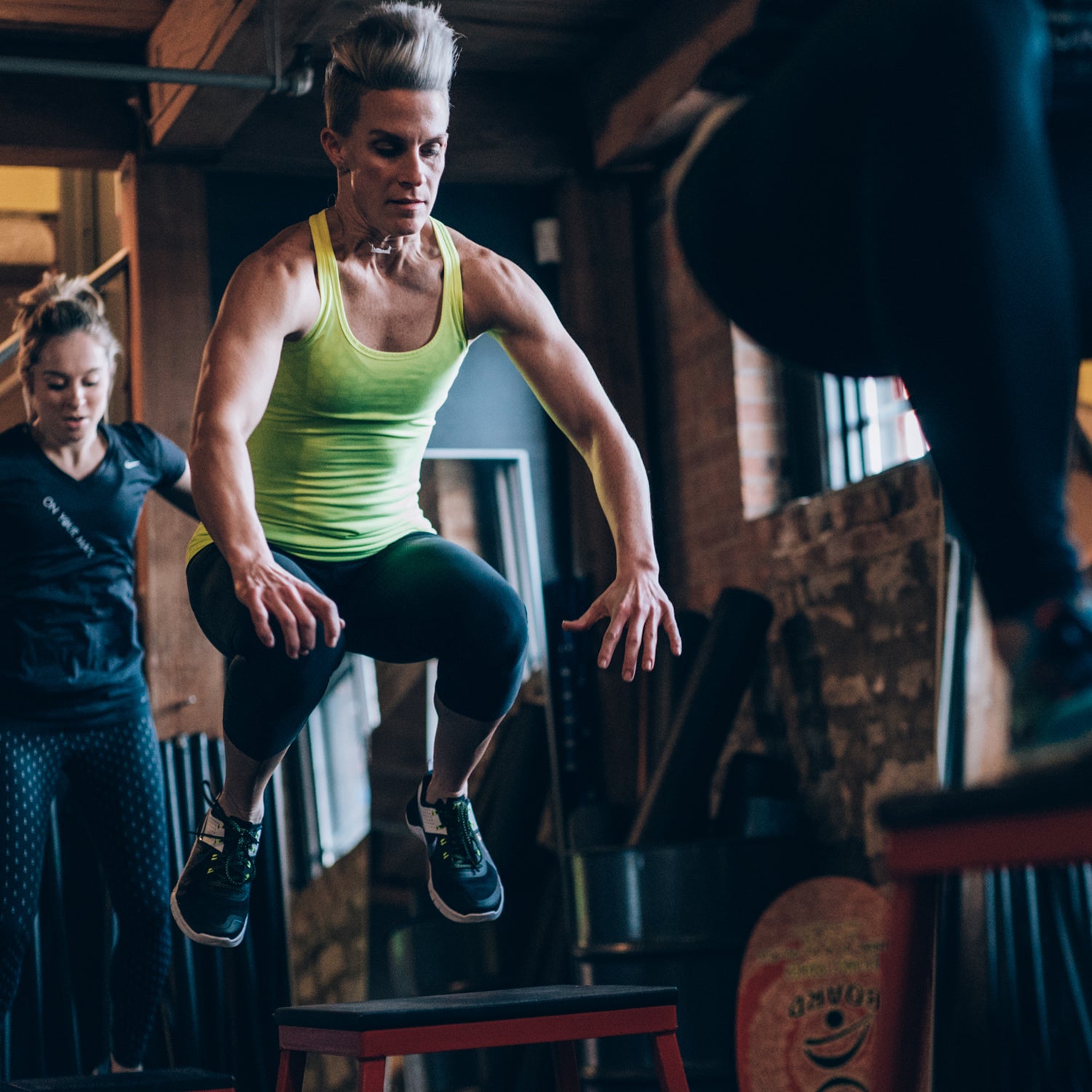It’s not only sprinters who have to focus on speed work. When endurance athletes want to lower their times, they can’t just tackle longer distances. They also have to up the intensity of their efforts.
While intervals seem like the obvious way to build speed, plyometric training teaches your muscles and tendons to act like springs, giving you even more quickness. It generates power by working your fast-twitch muscles, increasing muscle endurance, and raising your heart rate, says Emily Hutchins, a Nike master trainer and . A study of endurance runners who introduced plyometric training into their routines found that they expended far less energy during their runs than those who used weight training.
Hutchins created this beginner-friendly plyo routine to get you started. Integrate it into your endurance training once a week, performing each drill for 30 seconds and immediately moving to the next drill. Once you finish the last exercise, rest for 30 seconds, then repeat the entire circuit for a total of three to five rounds.
1. Battle Ropes
Remember your arms and core. Your upper body helps your lower body churn powerfully—think about how much harder it is to run without pumping your arms—and your core is the link between the two, Hutchins says.
Instructions: at arm’s length in front of your body and crouch into an athletic stance, knees and hips slightly bent, chest up, and core tightened. From here, begin alternately raising and lowering each arm with as much force as possible so the rope makes quick, powerful waves. Keep your chest up and torso stable throughout the entire exercise.
2. Speed-Skater Ladders
In addition to increasing reaction time, fast footwork teaches your body to recruit bigger, stronger muscle fibers to power your movement rather than relying on smaller muscle groups. The result: You can quickly call your speed and acceleration into action.
Instructions: with your weight planted on one foot inside the ladder and the other foot beside and slightly behind you for support. Push through your planted foot to spring forward, swinging your arms as you do so, and land in the same position on the opposite foot. Keep moving forward and switching sides.
3. Forward Two-Foot Box Jumps
Box jumps will boost your heart rate, engage your quads and glutes, and reinforce your body’s ability to use major muscles even when moving at high speeds. Greater efficiency means you can handle bigger efforts for much longer.
Instructions: with your feet hip-width apart and your core braced. Perform a quarter-squat, swing your arms for momentum, and push through both feet to jump up and forward, fully extending your hips and knees as you do so. As you approach the box, bend your hips and knees to land as gently as possible back in a squat position. Step down and repeat, prioritizing form over speed.


